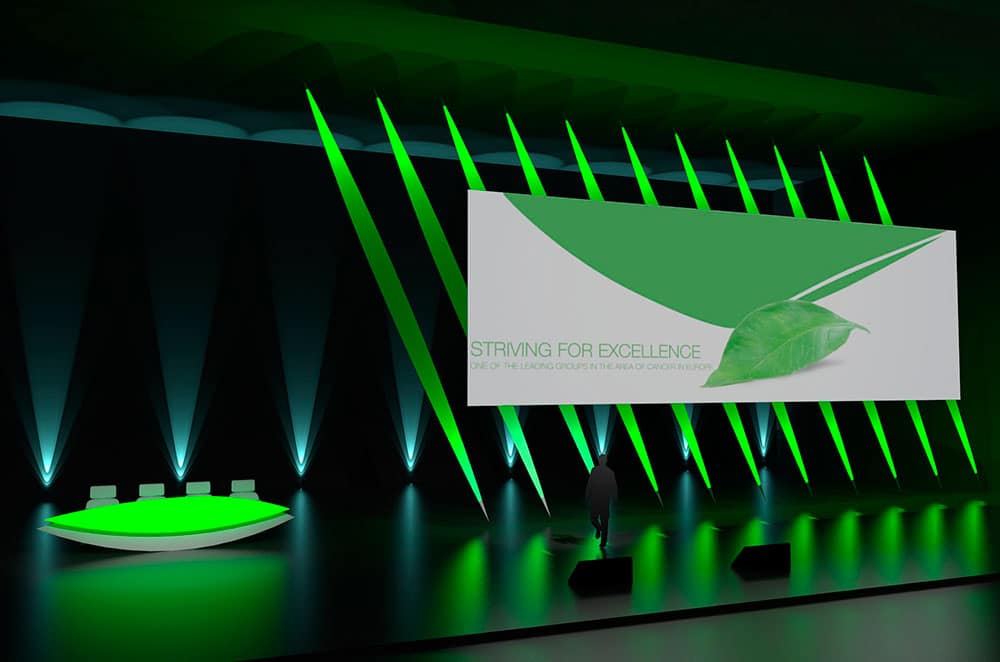Creating the Best Event Stage Design
At Saez Decom we work for all types of companies, brands and events. The bulk of our work focuses on corporate events that take place in the city of Barcelona. All this is due to the massive growth in the quantity and quality of events, fairs and conferences that have been held for a few years. Barcelona is one of the fashionable cities for all types of companies and corporations, above other European capitals, which is why at Saez Decom we want to take advantage of this rebound or growth and continue contributing our grain of sand to our sector, in which We have been working with so much passion for more than 30 years.
Since we focus on corporate events, our tips for designing event settings will focus slightly on these. Which does not mean that all these techniques cannot be extrapolated and applied in a similar way to other types of events or scenarios in which you have to work. The most important thing is to keep an open mind and bet as much as possible on ingenuity, imagination and creativity, no matter how big your budget is.
1. Get as much information as you can about the event
It is the first step and it is absolutely vital that you gather all the necessary information to be able to generate ideas about what the scenario will be like and everything that will surround it. What is the organizing brand of the event? Is the event about a new service or a particular product? Is it a company convention? Where is the event going to take place? What is the date on which the event will take place? What will the event be like and what parts do it comprise?
It’s necessary that all these questions be answered before starting to draw, since these answers will define the final result of the design. As we have mentioned previously, at Saez Decom we focus on corporate events, therefore our first source of information is branding (brand logo, corporate colors, the headquarters building, images about the brand, etc.). With all the information we can extract about branding and the answers to the previous questions, we begin to make sketches, thus applying all the information collected.
2. Maintain design cohesion
The ideal in most events is that you and your team are in charge of designing all the elements that will make it up, such as the stage, the stage background, the signage, the type of fireproof fabrics that will be used, etc. . But on some occasions, for reasons beyond your control, you will only be in charge of the design of the stage or another particular element, for this reason it is very important that your design respects and integrates perfectly into the overall design of the scenery to that event and also manage to be original and creative. Ultimately, one of the qualities that big brands value most today is that the design of their stage is out of the ordinary and is as personalized as possible.
3. Make several stage design proposals for events
Depending on the budget you have, you will be able to afford some things, and others will remain on the shelf. It is important to be clear that large sums of money are not necessary to carry out an idea. The best way to supplement lavish settings and events is to be innovative and as creative as possible. After all, when you have less money is when the most original ideas emerge.
Having said all this, it is important to know that most of the time the first suggested proposal will not be accepted, changes will almost always be made. That is why it is important to make several initial proposals, to be able to narrow down your client’s needs and tastes and adapt all their suggestions to your design, in a much faster and therefore optimal way.
4. Take the lighting into account
A very important role in the design of stages for events is lighting. If after all the work done to find the best design, the lighting is not up to par, everything can go down the drain in a matter of seconds. You must carry out a lighting design for the set to be able to inform the lighting team that will work on the event. It is vitally important to work closely with all the people involved in the design and assembly of the event, especially the lighting team.
These are just some tips on how to make a good stage design for events. In the end, each designer has their inspiration process and their way of working, this is ours and we hope to have helped you as much as possible in your new designs. For more information about the world of events, follow our blog and take a look at our portfolio to check out our projects. You can also fill out this form to contact us and we will help you with everything you need. Additionally, you can find more information about our services on the 3D infographics page.

